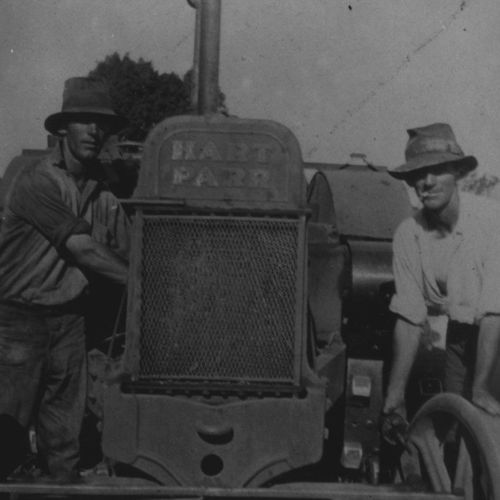1902-1988
Father
Robert Gray Lamont
Mother
Helen Heggie
Siblings
Robert, William, Andrew, Elizabeth Ferguson, Helen, Margaret, John, James Millam
Bruce’s Life
Bruce was born in Glasgow, Scotland in 1902 to Robert Gray Lamont and Helen Heggie. He was the second youngest of nine children. His father was noted from several sources as an engineer, boilermaker, ship peater, and iron fitter, all relative to the shipping industry in Glasgow. Helen Heggie was from Perthshire.
Bruce, aged 25, embarked on the “SS Borda” from the Port of London on 12 January 1926 with his brother James, aged 20 and disembarked in Sydney. Bruce cited his occupation as a Plater’s Helper – he was involved in the shipping industry as was his father.
When they dis-embarked they might have looked down the Harbour and saw a bridge under construction. They found work there and participated in the building of the Sydney Harbour Bridge which was opened in 1932. They gathered some money together and set out west.
Bruce and Jim made their way to Fifield/Tullamore and worked at various jobs often working side by side with both farming and stock work around the district particularly at Loomvale and Slapdown (Jack Strudwick), farm work, stock and horse work, mechanics, they were very handy mechanics.
On October 7, 1941, Bruce enlisted in the Army, joining the 2/13 Field Company. He cited his sister Elizabeth Stevens of Glasgow his next of kin.
The 2/13th was an infantry unit which served during the World War II. It formed in 1940 with mainly NSW volunteers and served in North Africa in 1941–1942. The were involved in the Siege of Tobruk – the battalion occupied the perimeter and undertook defensive duties, remaining there for eight months, with the distinction of being the only Australian infantry battalion to see out the length of the siege. Following the lifting of the siege, they were involved in Palestine, the First and Second Battles of El Alamein then returned to Australia during 1943 to later take part in campaigns against the Japanese in the Huon Peninsula Campaign and the Borneo Campaign, before being disbanded in 1946. Bruce was discharged on 3 January 1946.
Bruce returned to Tullamore after his discharge, he never married but was a respectful and kind man who was a wonderful uncle to his nieces and nephew and their children in turn.
Bruce lived on his own in Tullamore, I remember his house, especially his office, it was full of war memorabilia, although he would not talk about his experience. I remember him writing, he had the most beautiful handwriting.
As told by Gail Lynette Lamont, Bruce’s Niece

